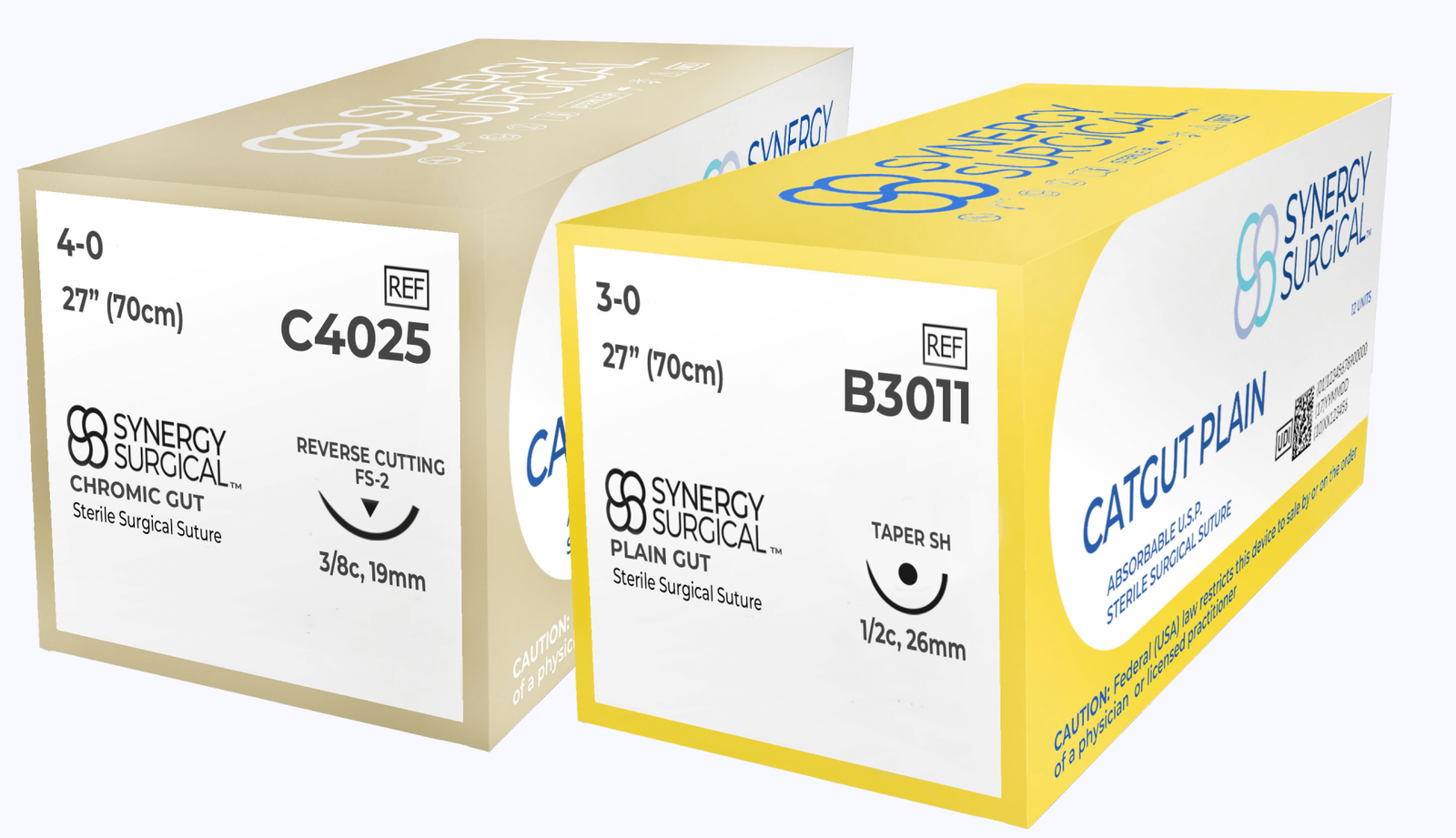When it comes to healing after surgery, the type of suture a doctor uses makes a big difference. One name that often comes up in surgical and dental care is the chromic gut suture. If you’ve wondered what it is, how it works, and when it’s used, this guide will walk you through everything you need to know.
What Are Chromic Gut Sutures?
Chromic gut sutures are a type of absorbable surgical stitch. Manufacturers make them from purified collagen, usually taken from the intestinal lining of sheep or cattle.
Unlike plain gut sutures, they are treated with chromium salts. This extra step slows down the body’s natural absorption process. As a result, the suture lasts longer before dissolving.
- Plain gut sutures: dissolve in 7–10 days.
- Chromic gut sutures: dissolve in 10–21 days, sometimes up to 30.
Because they remain longer, doctors use them for wounds or tissues that need extra healing time but don’t require permanent stitches.
How Do Chromic Gut Sutures Work?
Doctors place them just like other surgical threads. After placement, the suture holds tissues together to support healing. Over time, enzymes in the body break down the collagen fibers. Finally, the suture dissolves naturally, so removal isn’t needed.
This process is especially helpful in areas where removing stitches would be painful, such as inside the mouth or in delicate internal tissues.
According to a PubMed review, absorbable sutures like chromic gut provide short-term support but may trigger more tissue reaction compared to modern synthetics.
Benefits of Chromic Gut Suture
- Absorbable – no removal needed.
- Extended support – lasts longer than plain gut.
- Cost-effective – affordable and widely available.
- Practical – works well in oral surgery and gynecology.
Limitations and Risks
Despite their benefits, chromic gut sutures have limits.
- Tissue reaction: Some patients experience swelling or irritation since they are animal-based.
- Lower strength: Newer synthetic sutures often hold better.
- Shorter lifespan: They last longer than plain gut but still dissolve within weeks.
Chromic Gut vs. Plain Gut Sutures
| Feature | Plain Gut | Chromic Gut |
|---|---|---|
| Absorption Time | 7–10 days | 10–21 days |
| Tissue Reaction | Higher | Moderate (reduced by chromic treatment) |
| Best Use | Rapidly healing tissues | Tissues needing moderate support |
👉 In short: plain gut dissolves faster, while chromic gut provides tissues with more healing time.
Common Uses of Chromic Gut Sutures
Doctors and dentists choose chromic gut sutures for:
- Dentistry/Oral Surgery – after tooth extractions or gum surgery.
- Gynecology – for procedures involving the cervix or vagina.
- Gastrointestinal Surgery – to close certain internal tissues.
- Ligating Vessels – tying off small blood vessels.
- Veterinary Medicine – often used in pets for minor procedures.
Alternatives to Chromic Gut Sutures
When chromic gut isn’t the best choice, surgeons often turn to synthetic absorbable sutures:
- Vicryl (Polyglactin 910) – strong, dissolves in 30–60 days.
- PDS (Polydioxanone) – very strong, lasts up to 6 months.
- Monocryl (Poliglecaprone) – smooth handling, dissolves in 90–120 days.
These synthetics cause less tissue reaction and have more predictable absorption times than gut sutures.
Who Typically Uses Chromic Gut Sutures?
- Surgeons and dentists – for moderate tissue support.
- Gynecologists – when sutures should dissolve naturally.
- Veterinarians – for small animal surgeries.
Patients appreciate them because they don’t require a return visit for removal.
FAQs About Chromic Gut Sutures
1. Are chromic gut sutures safe?
Yes. They’ve been used safely for decades. Still, they may cause more irritation than synthetics.
2. How long do they last in the body?
They hold strength for about two weeks and usually dissolve within a month.
3. Can they be used for skin closures?
Yes, but many doctors prefer synthetics for skin since they cause less irritation.
4. Are there better alternatives?
For many surgeries, synthetic absorbable sutures are stronger and more predictable. Yet chromic gut remains cost-effective and useful in certain cases.

Chromic gut sutures may be one of the oldest absorbable suture types, but they continue to play a role in surgery today. Their balance of absorbability, extended support, and cost-effectiveness makes them especially useful in dentistry, gynecology, and gastrointestinal procedures.
That said, newer synthetic options are stronger, more predictable, and less reactive. Ultimately, the choice depends on the procedure, the tissue type, and the surgeon’s preference.
👉 If you’re a patient, knowing what chromic gut sutures are can help you feel more informed about your care. If you’re a student or professional, understanding their benefits and limits is key to making the right clinical decision.
For more product reviews, click here

